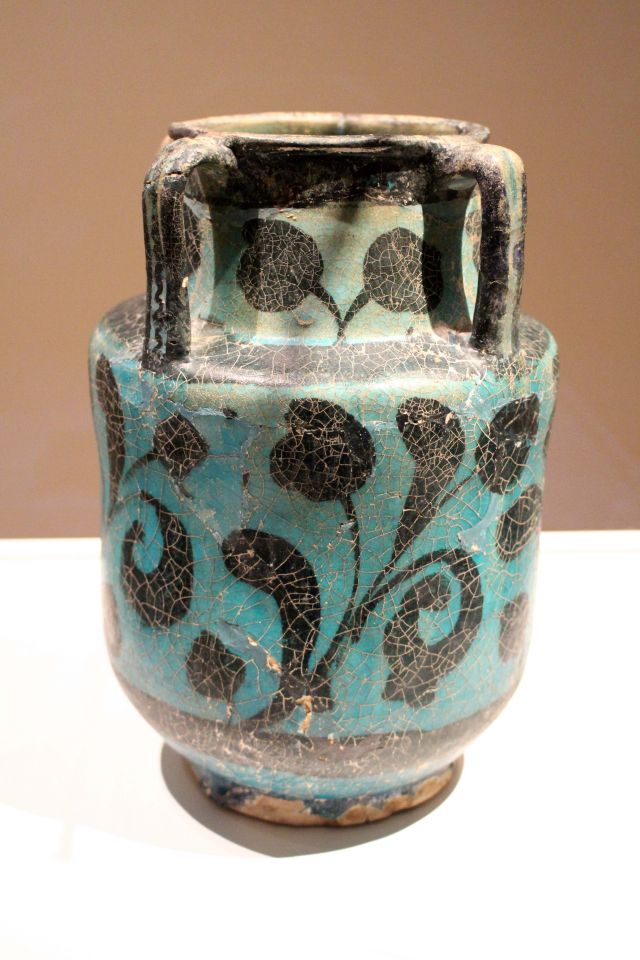With the exception of a brief middle school field trip to a Toronto mosque, my overall exposure to Islamic art had been very limited until I visited the Aga Khan Museum.
The Aga Khan is devoted to showcasing Islamic and Persian art and Muslim culture from different corners of the world. The name of the museum refers to the spiritual leader of the Shia Ismaili Muslims ― a community belonging to the Shia branch of Islam. Prince Shah Karim Al Hussaini assumed the role of Aga Khan in 1957, and in addition to his business endeavors ― he breeds race horses and manages a billion dollar business network ― he’s known to be a passionate advocate of Islamic art and architecture.

The Aga Khan’s permanent collections. Photos by Sydney Urbanek
The museum was officially opened in the fall of 2014. It’s the latest installment of an ongoing effort by the Aga Khan Development Network to establish spaces for social and cultural gatherings in the world’s major cities. When I first arrived at the site of the museum, I was astonished by its design. Constructed of white granite and glass, the outside is so bright and pristine that it feels as though you’ve stepped into a computer-generated rendering of the space ― it’s otherworldly.
Inside the museum, visitors are taken on a journey from the 8th century to the present through chronologically-arranged works.

Among the permanent collections are ceramics, metalwork, paintings and manuscripts of the Quran. Many of the artifacts are breathtaking for their age alone, like an incense burner resembling a rooster that dates back to the 11th century. Other pieces stand out for their intricate detailing or their rich colours and textures. In addition to the permanent collections, there were two featured exhibitions at the time of my visit.
The first, entitled Marvellous Creatures, showcased the animals that have held cultural significance in Islamic art throughout the ages. The exhibition separated these artifacts into four elements: earth, air, water and fire.
In the area focusing on the earthly realm, elephants, lions and horses were featured prominently among the works of art. The presence of each of these animals symbolizes royalty and majesty. The aquatic realm was full of scenes depicting leaping fish — symbolizing happiness and prosperity — as well as more ominous creatures like giant snakes and monsters that lurk in the deep sea.
The second exhibition, however, was what blew me away. It was called A City Transformed: Images of Istanbul Then and Now. During the early days of photography in the late 19th century, the new medium became increasingly popular in the Ottoman Empire. Images from as early as the 1850s offer glimpses of a flourishing Istanbul.
Some of these are photographs of grand architecture, while others depict everyday people in casual settings — in coffeehouses, courtyards and at home. My favourite part of the exhibition was a pair of panorama photos of the Istanbul skyline, taken from both the Galata and Beyazit Towers to get a wide range shot. The original was taken in 1895 with a modern version taken in 2015 laying under it.
In an era where we can easily take panorama photos on our iPhones, I was amused to see that the 19th century panorama was actually multiple photographs that had been taken from different angles and then strung together.
It was fascinating to see how even after more than a century had passed, the second photo of Istanbul didn’t differ by much. When it finally came time to leave, I parted with the museum knowing that it had granted me incredible insight into the history of Islamic art and culture.
Unlike that one time I saw a pair of Justin Bieber’s sneakers at the Bata Shoe Museum, my experience was genuinely meaningful and one that exposed me to new perspectives.
Tags
Art, art in travel, Culture, museum, religion
All final editorial decisions are made by the Editor(s)-in-Chief and/or the Managing Editor. Authors should not be contacted, targeted, or harassed under any circumstances. If you have any grievances with this article, please direct your comments to journal_editors@ams.queensu.ca.

